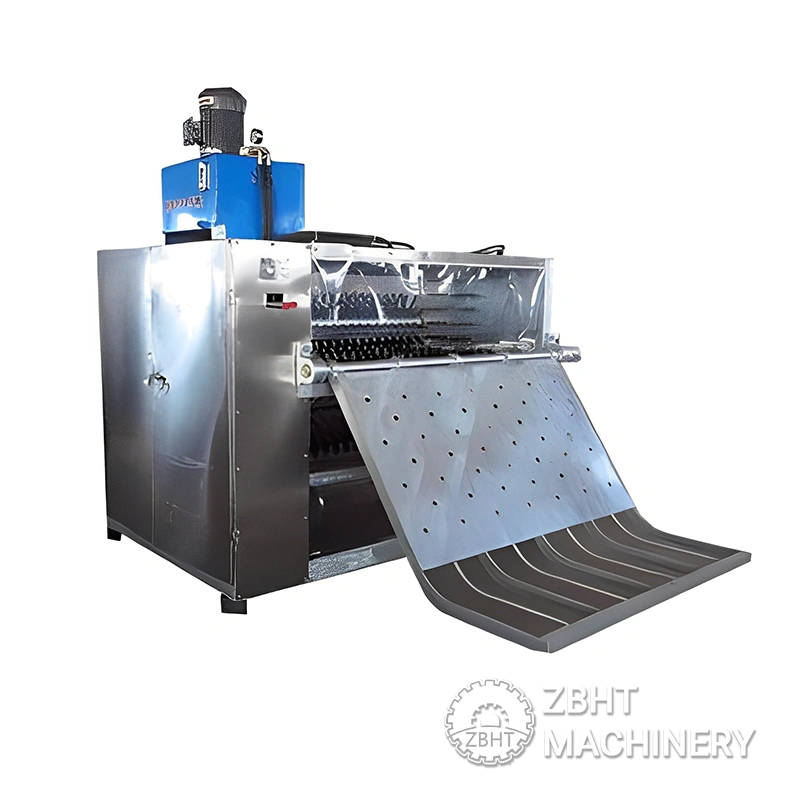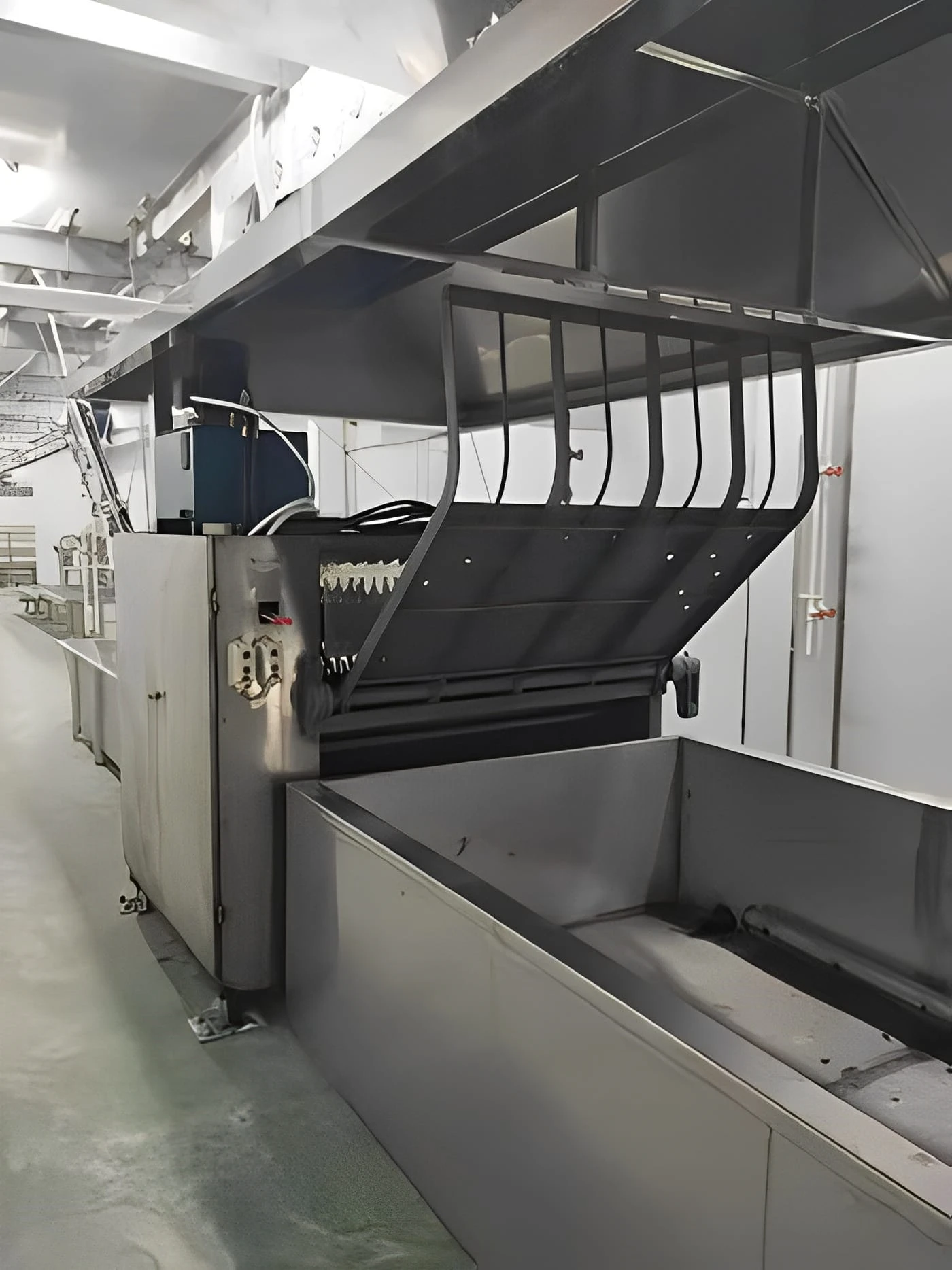
The goat dehairing machine is mainly used for the hair removal treatment of sheep/goats after bloodletting. It is an important slaughter equipment for the sheep slaughtering line.
The structure of the hair removal machine is mainly composed of a frame, 3 rollers, hair removal rod, a hydraulic station, etc.. Goat dehairing machine usually need to be used in conjunction with a sheep scalding tank.
1. Simple and compact structure, convenient operation, convenient installation and maintenance.
2. Wide application range, good hair removal effect and beautiful appearance.
3. With the help of the depilatory paddle, the wool will be cleaned about 96%.
4. Short hair removal time, less than 1 minute per sheep, high efficiency.
5. Can dehair 1-3 sheep at the same time.
Skinning and dehairing belong to two different processes of sheep slaughtering. The choice of process mainly depends on two aspects: first, some regions like to use the value of wool; second, some regions like to use mutton with skins.

Working process of sheep hair removal machine
1. The sheep must be scalded in the scalding tank before entering the hair removal machine. Evenly scalding the sheep body is the premise to ensure the quality of sheep body depilation.
2. Start the dehairing machine, use the rake to slide the soaked sheep into the dehairer to start dehairing. The hair removal machine has two axes that will move in the same direction, the large axis will achieve the up/down movement of the sheep carcass, and the small axis will achieve the rotational movement. With the help of depilation paddles, the carcass of the sheep will be cleaned about 96%.
After the carcass has been dehaired, slide the carcass out of the machine to prepare it for the next process.
1. Water temperature and scalding time control
The soaking and scalding of the sheep carcass is the premise to ensure the hair removal effect of the hair removal machine, so it is necessary to pay attention to the control of water temperature and scalding time during the sheep soaking and scalding process.
The sheep carcass needs to be scalded in a hot water pool around 55℃-62℃ for 3-5 minutes. Too high water temperature or too long scalding time will scald the sheepskin and cannot guarantee the integrity of the sheepskin, while too low temperature or scalding time If it is not enough, it will not be able to achieve the effect of hair removal. In addition, the season and the type of sheep will also affect the soaking effect.
2. During the scalding process, the sheep body needs to be constantly turned in the water, in order to scald every part of the sheep body evenly.
3. Whether the scalding meets the requirements of success can be determined according to whether the sheep’s head, limbs and other parts that are not easy to be scalded can be smoothly shed.
4. Replace the damaged hair removal stick in time to avoid affecting the hair removal effect.
No. We are the original manufacturer of animal slaughtering lines, meat processing equipment, deboning and cutting system, spare parts, etc.
We have 3 slaughtering lines in our factory, including 1 cattle slaughtering line, 1 sheep slaughtering line and 1 pig slaughtering line. We also have deboning and cutting systems, hygiene tools, etc in our factory. You can also see the different design in our sample line room.
Normally, we will need 3 weeks for single machine, and 2 months for a whole production line. For confirmation, we will need to confirm with production director first. However, we will make your production lines as soon as possible.
We will need 30% of total contract value in advance by T/T as deposit. And the balance will be paid before your products are shipped out of factory.
We have our own inspection team in factory. They will inspect the raw material, semi-finished product, finished product following our drawing and standard in quotation sheet. You will get what you see during factory visit and you can check your products during the production anytime during the production.
Yes. We will send 1 engineer for overseas project guiding installation. As a buyer, you will need to pay for the round way air tickets, food and accommodation, local transportation in your project location, and also pay the allowance of the technician during installation.